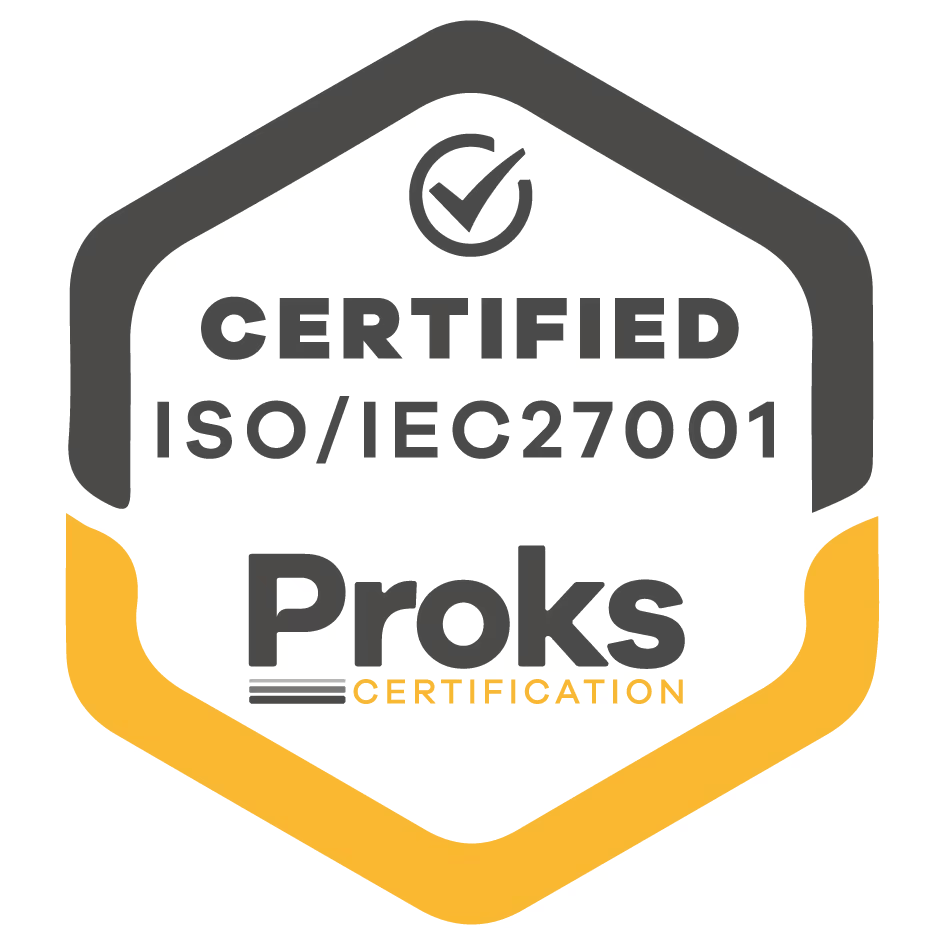

How AI Outperforms OCR Solutions in Sales Order Processing
Sales order entry is a critical component of the sales process, serving as the entry point for customer orders and the foundation for order fulfillment. Efficiently processing these orders is essential for maintaining customer satisfaction, ensuring timely delivery, and optimizing overall sales operations.
The technology most likely used in your company to boost sales order entry is Optical Character Recognition (OCR). However, there is a new kid in town: Artificial Intelligence (AI). While OCR has been a staple in digitizing and automating the reading of printed or handwritten text, AI represents a more advanced approach, capable of understanding, learning, and improving over time. This blog post explores how AI outperforms OCR solutions in sales order processing, providing a comprehensive comparison and highlighting the transformative potential of AI.
How OCR Works in Sales Order Processing
In sales order processing, OCR solutions are used to extract relevant information from purchase orders, invoices, and other sales-related documents. Most likely, your customers send you their orders via mail as a PDF or scanned image. Typically, an OCR system scans the document, identifies characters and words, and converts them into a digital format that can be processed by other software systems, such as your company’s ERP or CRM system. This process involves several steps:
- Image Preprocessing: Enhancing the quality of the scanned document to improve text recognition.
- Text Detection: Identifying areas of the document that contain text.
- Character Recognition: Converting detected text areas into machine-readable characters.
- Data Extraction: Pulling out relevant information, such as order numbers, product details, and quantities.
Limitations of OCR Solutions
The goal of OCR solutions is straight forward: to help employees spend less time on manual data entry, reduce errors and hence increase cost efficiency. However, OCR technology has several limitations that can hinder its effectiveness in sales order processing:
- Lack of Contextual Understanding
Probably the biggest drawback is that OCR provides a mere recognition of pixels for digitizing content, but cannot understand, interpret or validate that content. In that sense, it is a “stupid” system because it doesn’t know how to make sense of data in the context, spot errors, or deal with irregularities. For instance, the client forgot to mention the quantity qualifier “kilograms” in their order request and the OCR system can’t figure out if the reasonable measure would be “tons” or “kilograms”, so it throws an error. Hence, automation of processes with OCR is limited and in many cases needs an employee to ensure that data was captured correctly.
- Limited Flexibility
OCR systems require highly rigid and predefined inputs. For instance, one needs to manually instruct the OCR system that the address of the recipient is usually located in the top-left corner of a document and that the subject line precedes the main text of the invoice. Not surprisingly, OCR struggles with unstructured data and documents that do not follow a consistent format. Imagine your client sends an Excel-file instead of a PDF - your OCR would capitulate. Or if your company receives dozens or more different order entry forms and formats, it becomes a literal nightmare for OCR experts to manually define each format to achieve an acceptable quality.
- Limited Transferablility
Transferring OCR systems that were fine-tuned with great effort for one team and their specific use case to other teams is very cumbersome and often not possible. Your IT department will most likely have to adjust the OCR system for your use case from scratch - this takes time and is expensive.
- Accuracy Issues
Not surprisingly, OCR accuracy can be easily compromised by two factors. First, if the style, layout, or format of the sales entry form you received varies, OCR will likely mess up information (e.g. confuse height vs. length of the ordered metal plate) or will not be able to retrieve any information at all, thus requiring an employee to sort out the case.Second, poor-quality scans (e.g. a blurred scan or a stained image) and varied handwriting styles pose a challenge to OCRs, with success rates often dropping below 40%.
- Static Performance
OCR systems do not learn or improve from past errors or new data, they stay as “smart” or “stupid” as they were initially design. Every improvement request will need to be passed down to the IT department, which always takes time and consumes significant resources.
How AI Works in Sales Order Processing
The Advantages of LLMs over OCR in Sales Order Processing
- Contextual Understanding
One of the most significant advantages of Large Language Models (LLMs) over OCR is their ability to understand and interpret content within context. Just like a human would. Unlike OCR, which merely recognizes and digitizes pixels, LLMs can comprehend the meaning behind the text and validate the content accordingly. This contextual understanding allows LLMs to handle irregularities and ambiguities more effectively. Taking up the example above, if a client omits the quantity qualifier "kilograms" in their order request, an LLM can infer the correct measure based on the surrounding context and historical data, such as previous orders from the same client. This reduces the likelihood of errors and minimizes the need for human intervention, thereby enhancing automation.
- Automation
Given LLMs capacity to understand context, they can be employed as highly adaptable virtual assistants that assist us in or even fully take over tasks that otherwise humans would need to do. For instance, information extracted from a sales order PDF can be connected to the accompanying free text of the client’s email and correctly acted upon. For instance, if the AI Assistant finds that the desired delivery date as indicated in the email text will not be possible, it can automatically write up an email response to your client.
- Flexibility
LLMs exhibit remarkable flexibility in processing diverse and unstructured data formats. Unlike OCR systems, which require rigid and predefined inputs, LLMs can adapt to various document structures without extensive manual configuration. They can seamlessly process information from different formats, including PDFs, Excel files, emails, and even handwritten notes. This adaptability is particularly beneficial for companies that receive a wide variety of order intake forms and formats. With LLMs, there is no need for the painstaking manual definition of each format. The models can automatically identify and extract relevant information, regardless of its placement within the document.
- Transferability
LLMs are highly transferable across different teams and use cases with minimal adjustments. While OCR systems often require significant customization and fine-tuning for each specific scenario, LLMs are trained on a broad range of data and thus can often be applied to new contexts with relative ease and out-of-the-box. This transferability means that an LLM-based solution can be quickly scaled across different departments or even different subsidiaries without extensive reconfiguration. The result is a more cost-effective and time-efficient implementation, reducing the burden on IT departments and ensuring faster deployment.
- Accuracy
LLMs offer superior accuracy in data extraction and interpretation compared to OCR systems. They are less likely to be compromised by variations in document style, layout, or format. For instance, an LLM can accurately differentiate between the height and length of an ordered metal plate, even if the format of the sales entry form varies, because LLMs can understand the context and know that your company can’t produce metal plates with 130 cm of height. Additionally, LLMs are more resilient to poor-quality scans and varied handwriting styles. While OCR systems may struggle with blurred or stained images, LLMs leverage advanced prediction algorithms to maintain high success rates in data retrieval. This heightened accuracy reduces the need for manual corrections and enhances the overall efficiency of the sales order intake process.
- Dynamic Learning and Improvement
Unlike static OCR systems, LLMs are capable of continuous learning and improvement. They can be trained on new data and updated based on past errors, becoming progressively smarter over time. This dynamic learning capability means that LLMs can adapt to evolving business needs and improve their performance without requiring extensive IT intervention. Every new piece of information processed by the LLM contributes to its knowledge base, enabling it to handle future tasks more effectively. This results in a more intelligent and responsive system that can keep pace with the demands of modern sales order processing.
{{cta="/cta/automate-your-sales-order-workflow-with-ai-agents"}}
Implementation Scenarios: OCR vs. LLMs – Which One’s Right For You?
Deciding between OCR (Optical Character Recognition) and LLMs (Large Language Models) for your sales order entry can feel a bit like choosing between a Swiss Army knife and a high-tech robot. Both are useful, but which one is the right fit for your unique needs?
Scenario 1: The Simple Life with OCR
Imagine you’re running a little operation where sales orders come in neat, predictable formats – let’s say, as highly standardized PDFs or scanned documents. If this sounds like your daily grind, OCR might just be your best choice.
- Ease of Use: OCR is good at recognizing text from standardized images or scanned documents.
- Speed and Simplicity: If your documents are straightforward, OCR can zip through them in no time.
- Cost-Effective: On a budget? OCR solutions for neatly defined and small use cases can be cheap and quick to implement. Perfect for when you need a no-fuss solution that gets the job done.
But, as we saw in the chapters above – OCR has its limits. It’s great with plain text but is simply not suitable with more complex documents, diverse formats, and high-quality and adaptive process automation.
Scenario 2: Embrace the Future with LLMs
Now, if your sales orders look more like a wild jungle of formats, languages, and embedded tables, and come in large numbers, it’s time to seriously consider LLMs.
- Versatility: LLMs can handle a wide variety of document types and formats. From PDFs to emails and even those quirky Word documents your clients love to send, LLMs can make sense of it all.
- Contextual Understanding: LLMs don’t just read text; they understand it. This means they can pick up on context, nuance, and even the subtleties in customer requests.
- Integration and Automation: With LLMs, you can automate more than just data entry. They can draft emails, generate quotes, and even predict customer needs.
Of course, all this power comes with a bit of a price tag. LLMs can be more complex and costly to implement, but the payoff in efficiency and accuracy can be well worth it.
{{cta="/cta/85-faster-order-processing-with-ai-agents"}}
Making the Choice: OCR or LLM?
So, how do you choose? Here’s our practical advice:
- Size and Complexity of Your Operation: For smaller, simpler operations, OCR might be your go-to.
- Diversity of Documents: If your sales order entry documents vary a lot and come in big numbers, LLMs are the way to go. They thrive on complexity and variety.
- Budget Considerations: Tight budget? OCR is wallet-friendly. Ready to invest for long-term gains that make your company competitive? LLMs offer a powerhouse solution.
- Automating tasks: If you want to automate substantial parts of your workflow, LLMs are the choice to go. Acting like real employees, AI Assistants can save your employees valuable time so they can focus on the real value drivers.
- Future-Proofing: Looking to scale and grow? LLMs can evolve with your needs, making them a future-proof choice for ambitious businesses.
At turian, we believe in finding the perfect fit for your unique needs. Whether you’re team OCR or team LLM, we’re here to help you navigate the options. Want to learn how to transform your sales order entry process with AI? Let’s get started – book a free demo!
{{cta-block-blog}}






